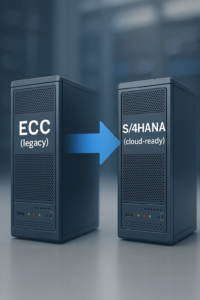Warehouse management is a critical component of the supply chain, ensuring efficient storage, tracking, and movement of goods within a facility. In recent years, advances in technology have transformed the way warehouses operate, making them smarter, more efficient, and adaptable to the demands of modern business. SAP EWM (Extended Warehouse Management) system is a prime example of how technology has revolutionized the warehouse management landscape.
The Evolution of Warehouse Management
Traditional warehouse management systems (WMS) have been used for decades to streamline operations, maintain inventory accuracy, and manage storage locations. However, as businesses have become more complex, customer expectations more demanding, and global supply chains more interconnected, the need for more advanced and agile solutions has arisen. Earlier customers were resistant to change but not the customers preferances have completely changed due to digitalization and they need constant changes.
The Birth of SAP EWM
SAP Extended Warehouse Management (EWM) was introduced to address these evolving needs. It is an integrated software solution designed to improve warehouse operations in real-time. SAP EWM builds on the functionalities of traditional WMS but adds more advanced features that enable businesses to gain a competitive edge. This system has been recognized as one of the most sophisticated and comprehensive warehouse management solutions available in the market.
Key Features of SAP EWM
1. Efficient Inventory Management: SAP EWM offers real-time visibility into inventory, allowing for accurate stock management, monitoring, and optimization. Businesses can reduce overstock and understock situations, thus minimizing carrying costs.
2. Advanced Slotting and Storage: EWM provides intelligent slotting tools that help optimize the placement of products within the warehouse based on their storage and retrieval characteristics. This results in faster picking and put-away operations.
3. Cross-Docking: EWM enables businesses to streamline goods receiving, processing, and dispatching by employing cross-docking strategies, which minimize storage time and costs.
4. Task and Resource Management: EWM assigns tasks to resources dynamically, optimizing the use of available labor and equipment. This leads to increased operational efficiency.
5. Wave Management: Businesses can use wave management to group and prioritize orders for efficient processing. This feature is particularly useful for e-commerce and distribution centers.
6. Yard Management: EWM includes yard management capabilities, which help optimize the use of loading and unloading areas, reducing waiting times and bottlenecks in the yard.
7. Labor Management: The system offers tools to track and optimize the performance of warehouse staff, leading to better workforce utilization and improved efficiency.
8. Integration with Other SAP Modules: EWM seamlessly integrates with other SAP modules such as SAP ERP and SAP Transportation Management, ensuring a smooth flow of data and processes.
Conclusion:
Warehouse management has evolved with technology, and SAP’s Extended Warehouse Management (EWM) system offers advanced solutions. EWM features include efficient inventory management, intelligent slotting, cross-docking, dynamic task and resource allocation, wave management, yard management, labor management, and integration with other SAP modules, making it a comprehensive and sophisticated warehouse management solution. Read More


 RECOGNISED WORLD OVER SOLUTIONS
RECOGNISED WORLD OVER SOLUTIONS
 Find out how BSC GLOBAL digitally transformed P2P cycle for worlds renowned brand in Automobile
Find out how BSC GLOBAL digitally transformed P2P cycle for worlds renowned brand in Automobile










